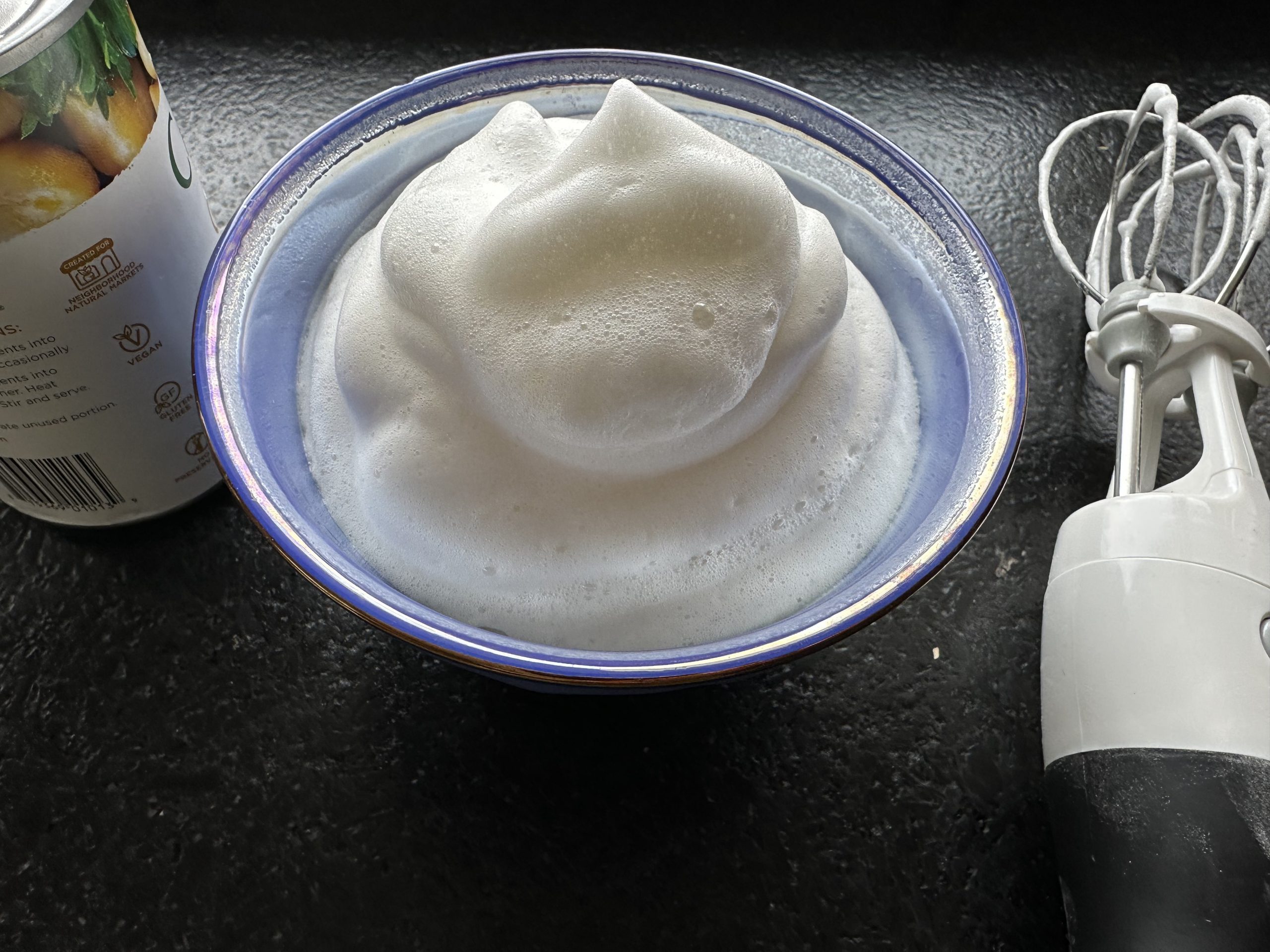The Fabulous Water of Bean Cans
Aquafaba, also known as the leftover liquid in a can of beans, is a nine year-old word based on Latin for “bean water.” When I hear the word aquafaba my mind reflexively thinks “fabulous water,” which is appropriate considering how useful it is, including as an egg substitute.
Egg prices have more than doubled in the past year, thanks to the deadliest ever outbreak of bird flu. This spring, as the egg industry scrambles to rebuild its flocks, now is a good time to remember the aquafaba, and its many uses. You can beat it stiff, like egg whites, use it in baked goods, and even emulsify it into the finest mayonnaise.
The water from any type of canned bean can be considered aquafaba, but garbanzo beans and other white beans, like Great Northern or White Navy, are used the most, thanks to their mild flavors and because they whip particularly well. Its fabulous properties are due to the fact that legumes contain albumins and globulin proteins that are also found in eggs. These give the aquafaba a kind of strength that allows it to trap and hold air when beaten, as well as imparting it with other egg-like qualities.
Because it’s so useful as an egg substitute in many vegan recipes, most of the discoveries around aquafaba have come from that community. When using aquafaba to replace whole eggs, measure out 3 tablespoons per egg, or 2 tablespoons to replace each egg white. Lightly whisk to aerate, just as you would beat eggs. I’m not a baker, but I have had spectacular results from adding garbanzo aquafaba to Krusteaz pancake mix. The pancakes were fluffy and firm.
Most impressively, and most importantly, you can use aquafaba as an emulsifier in a delicious egg-free mayonnaise that is as solid as a mayonnaise could be. And it’s easier to make than typical homemade mayo. It might be the best mayo I’ve had, and I don’t say that lightly.
My research on aquafaba resulted in many cans worth of garbanzo bean byproduct. Before the discovery of aquafaba it was usually the other way around, with the beans themselves being the main event and the liquid being forgotten, and discarded. But now I found myself hoarding the liquid from the bean cans, while I figured out what to do with the beans themselves. I ended up making a lot of hummus. The only problem, it turns out, is I needed aquafaba for the hummus too. Hummus, like many things in life, is better with aquafaba.
Here are some fabulous recipes for aquafaba, including for mayonnaise and for baked aquafaba meringue. I’ve also included my hummus recipe, since you will need to do something with all of those leftover garbanzo beans.
Aquafaba Mayo
This recipe is more forgiving than for making traditional mayo at home. It’s closer in consistency to factory produced supermarket mayo, and the flavor is spot on. Thick, creamy, tangy, tight and firm, it’s totally perfect. You’ll need a narrow jar or cup, and some kind of mixer, ideally an immersion blender.
3 tablespoons garbanzo bean aquafaba
1 tablespoon lemon juice or vinegar
½ teaspoon mustard
½ teaspoon salt
One cup oil, such as olive oil, grapeseed or sunflower oil
Optional: for aioli, minced garlic
In the immersion receptacle or blender, combine all of the ingredients except the oil. Blend for 20 seconds to mix. Slowly, add the oil, a teaspoon at a time, until it starts to noticeably thicken. Pour in the rest of the oil, and garlic if using. Blend until it’s as thick as mayo.
Aquafaba Meringue Cookies
These cookies are sweet and tart, and melt in your mouth like baked cotton candy.
Makes ten cookies
One refrigerated can of garbanzo beans, shaken vigorously for 30 seconds, and then opened
¼ teaspoon cream of tartar
½ cup sugar
2 teaspoons lemon juice
Empty the liquid into a wide bowl and set aside the beans for later use. Add the cream of tartar, sugar and lemon. With a handheld egg beater or electric beater or mixer – something more than a whisk — beat the aquafaba until you have stiff peaks. While the oven preheats, dollop the foam onto a parchment paper covered baking sheet.
Bake at 250 for 45 minutes. Let cool before serving.
Hummus
1 can garbanzo beans
¼ cup tahini
½ teaspoon Salt
1 clove garlic
The aquafaba from that can of beans, or as much as you can get
6 tablespoons olive oil
Combine all of the ingredients in a blender. Blend, adding more oil and aquafaba until perfectly irresistibly smooth and runny. Use water if the aquafaba runs out.
